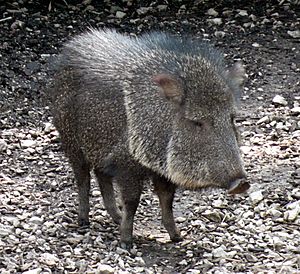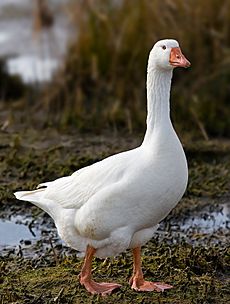Botanical Garden and Zoo of Asunción facts for kids
Quick facts for kids Botanical Garden and Zoo of Asunción |
|
|---|---|
| Jardín Botánico y Zoológico de Asunción | |
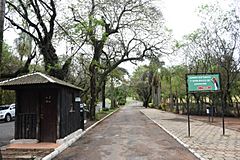
Entrance to the garden and zoo
|
|
| Motto | Natura miranda en maximum minimis investigacioni rerum naturalium Paraguarie consecrata |
| Location | Asunción, Paraguay |
| Area | 110 hectares (270 acres) |
| Created | 1914 |
| Founder | Karl Friebig |
| Designer | Anna Gertz |
| Operated by | Municipalidad de Asunción |
| Open | Open all year |
| Camp sites | one (public) |
| Plants | 23065 |
| Director | Maris Llorens |
| Website | www.mca.gov.py/zoo.htm |
| No. of animals | 337 |
|---|---|
| No. of species | 64 |
The Botanical Garden and Zoo of Asunción (Spanish: Jardín Botánico y Zoológico de Asunción) is a special place in Asunción, the capital city of Paraguay. It's a huge area that combines a beautiful botanical garden with a fun zoo.
This garden and zoo is one of the biggest green spaces in Asunción. It covers about 110 hectares (that's like 270 football fields!). The zoo is home to almost 70 different kinds of animals, including birds, mammals, and reptiles. Most of these animals are native to South America. The botanical garden shows off many local plants, especially its amazing and old trees.
Contents
History of the Garden and Zoo
This large property used to be the country home of Carlos Antonio López. He was the president of Paraguay from 1842 to 1862. President López had his home, "Casa Lopez," built here in the 1840s.
This main building is very important for its history, architecture, and design from that time. It is now a protected building in Asunción. In 1896, López's family sold the property to the state-owned Agricultural Bank.
Founding the Garden and Zoo
The botanical garden officially started in 1914. It was created by two German scientists, Karl Fiebrig and his wife, Anna Gertz. Karl Fiebrig was a professor of botany and zoology at the University of Asunción. He had moved to Paraguay in 1910 after studying plants and insects for European museums.
Fiebrig also started a school for agriculture in 1916. He even founded a "Cotton Institute" which helped fund the garden. Anna Gertz designed many parts of the gardens. Sadly, she passed away in May 1920 and was buried in the gardens.
The zoo was also started by these scientists. They had a very modern idea for the time: housing animals in places that looked as much like their natural homes as possible. Karl Fiebrig continued to be the director of the garden and zoo.
Changes Over Time
In 1936, after a war, Karl Fiebrig and his family had to leave Paraguay. The responsibility for the garden and zoo then went to the Municipality of Asunción, which still manages it today.
Historically, this property was much larger, over 600 hectares. It had its own port, a train station, and many roads. Over the last 50 years, some parts of the land have been used for other things. For example, there's a water treatment plant, a communication station, and the Asunción Golf Club, which was originally laid out by Fiebrig.
Since 2013, Maris Llorens has been the director of the garden and zoo.
What You Can See and Do
The Botanical Garden and Zoo of Asunción has several interesting areas for visitors to explore:
- Botanical Garden: This area was originally called a botanical garden because of its rich natural plant life. The trees here are over 150 years old and offer wonderful shade.
- Nursery: This is where over 500 types of plants are grown. Many of them are medicinal plants, used to teach people about the healing properties of herbs.
- Zoo: The zoo is home to about 64 different kinds of animals, including mammals, birds, and reptiles. A very special animal here is the Tagua, a type of peccary (a pig-like animal) from the Paraguayan Gran Chaco. People thought it was extinct, but it was rediscovered in the 1980s!
- Natural History Museum: This museum is located in an old farmhouse that used to be part of Carlos Antonio López's estate.
- Golf: The Asunción Golf Club is located on part of the Botanical Garden's land. It has been there for 50 years and is managed separately.
Botanical Garden and Plant Nursery
The plant nursery is located behind the main house. It grows more than 500 species of plants, with a special focus on medicinal plants. It's open to the public and works with the Botanic Garden and Conservatory in Geneva, Switzerland.
For over 10 years, the nursery has been studying how to grow, share, and introduce plants. They focus on native plants and also medicinal plants brought by Paraguayan settlers.
The main goal of the nursery is to keep the knowledge of medicinal plants alive in Paraguay. People in Paraguay use many herbs and know about at least 50 different kinds. The nursery studies how to grow and harvest these plants and uses this knowledge for education.
Some of the plant collections include:
- A medicinal plant nursery, which is a place for research, education, and training on how to grow about 500 different species.
- An agronomic nursery, which focuses on growing and selecting improved Paraguayan crop plants.
In May 2006, the gardens held an exhibition called Ethnobotany 2006 "Our plants, our people" (Nuestras Plantas, Nuestra Gente). This was part of a project that lasted about ten years. It helped improve the botanical garden and created a large collection of Paraguayan medicinal plants. It also led to the Center for Conservation and Environmental Education (CCEAM), which offers many educational activities.
Zoo Animals
The zoo is located right next to the botanical garden. The animals here are mostly from Paraguay, but there are also some from other parts of the world.
Mammals at the Zoo
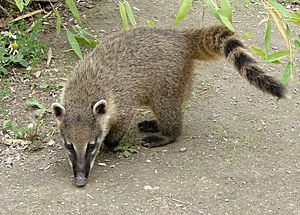
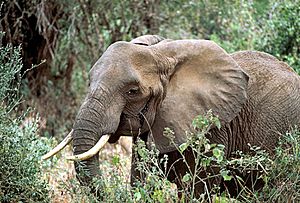
Here are some of the mammals you can see at the zoo:
- African lion (Panthera leo)
- Bengal tiger (Panthera tigris tigris)
- Jaguar (Panthera onca)
- Puma (Puma concolor)
- Geoffroy's cat (Leopardus geoffroyi)
- Ocelot (Leopardus pardalis)
- Crab-eating fox (Cerdocyon thous)
- Crab-eating raccoon (Procyon cancrivorus)
- Ring-tailed coati (Nasua nasua)
- Tayra (Eira barbara)
- Fallow deer (Dama dama)
- Gray brocket deer (Mazama gouazoubira)
- Domestic goat (Capra aegagrus hircus)
- White-lipped peccary (Tayassu pecari)
- Collared peccary (Tayassu tajacu)
- Tapir (Tapirus terrestris)
- Common hippopotamus (Hippopotamus amphibius)
- African savannah elephant (Loxodonta africana)
- Capybara (Hydrochoerus hydrochaeris)
- Giant anteater (Myrmecophaga tridactyla)
- Southern tamandua (Tamandua tetradactyla)
- Common chimpanzee (Pan troglodytes)
- Black-headed spider monkey (Ateles fusciceps)
- Azara's night monkey (Aotus azarae)
- Black howler monkey (Alouatta caraya))
- Azaras's capuchin (Sapajus cay paraguayanus)
Birds at the Zoo
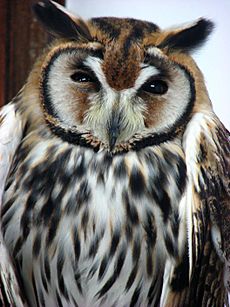
Here are some of the birds you can see at the zoo:
- Chaco eagle or Crowned solitary eagle (Harpyhaliaetus coronatus)
- Common rhea (Rhea americana)
- Red-and-green macaw (Ara chloroptera)
- Monk parakeet (Myiopsitta monachus)
- Great horned owl (Bubo virginianus)
- Aplomado falcon (Falco femoralis)
- Jabiru (Jabiru mycteria)
- Southern crested caracara (Caracara plancus)
- Southern screamer (Chauna torquata)
- Nanday parakeet (Aratinga nenday)
- Black vulture or American black vulture (Coragyps atratus)
- Barn owl (Tyto alba)
- Burrowing parrot or Patagonian conure (Cyanoliseus patagonus)
- Blue-fronted amazon (Amazona aestiva)
- Blue-winged macaw (Primolius maracana)
- Vinaceous-breasted amazon (Amazona vinacea)
- Striped owl (Asio clamator)
- Spectacled owl (Pulsatrix perspicillata)
- Toco toucan (Ramphastos toco)
- Blue-and-yellow macaw (Ara ararauna)
- Hyacinth macaw (Anodorhynchus hyacinthinus)
- Ostrich (Struthio camelus)
- Greylag goose (Anser anser)
- Indian peafowl (Pavo cristatus)
- Silver pheasant (Lophura nycthemera)
- Ferruginous pygmy owl (Glaucidium brasilianum)
- Wild turkey (Meleagris gallopavo)
- Helmeted guineafowl (Numida meleagris)
- Red junglefowl (Gallus gallus)
- White-faced whistling duck (Dendrocygna viduata)
- Muscovy duck (Cairina moschata)
Reptiles at the Zoo
Here are some of the reptiles you can see at the zoo:
- Yellow anaconda (Eunectes notaeus)
- Yacare caiman (Caiman yacare)
- Broad-snouted caiman (Caiman latirostris)
- Green iguana (Iguana iguana)
- Red-eared slider or red-eared terrapin (Trachemys scripta elegans)
- Red-footed tortoise (Geochelone carbonaria)
See also
 In Spanish: Jardín Botánico y Zoológico de Asunción para niños
In Spanish: Jardín Botánico y Zoológico de Asunción para niños


